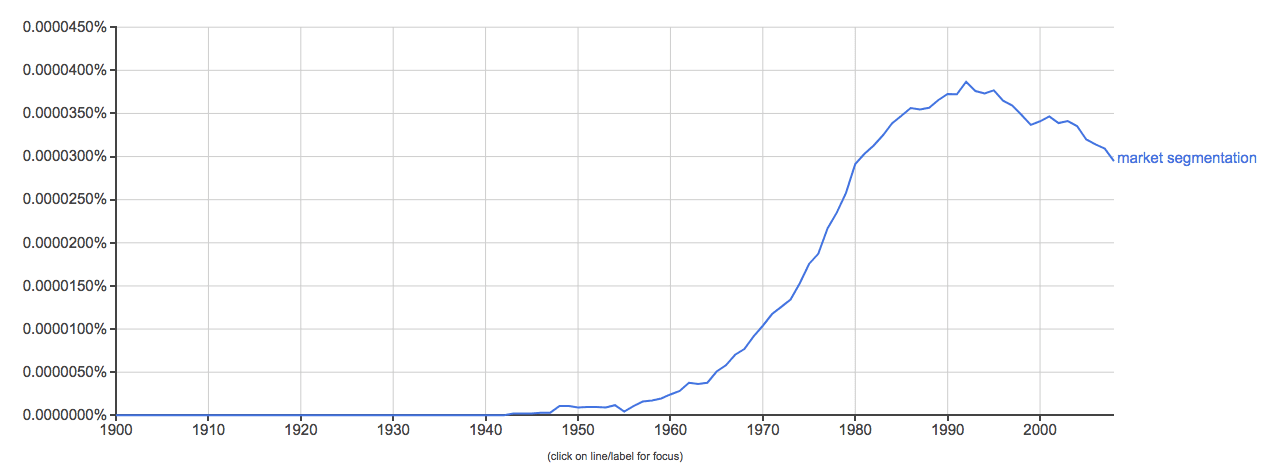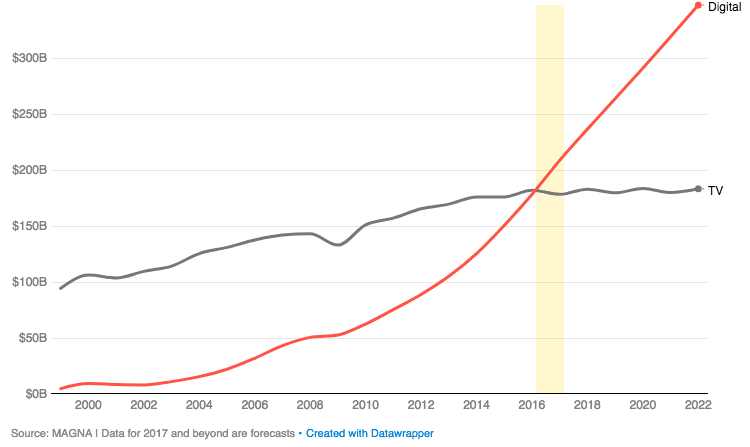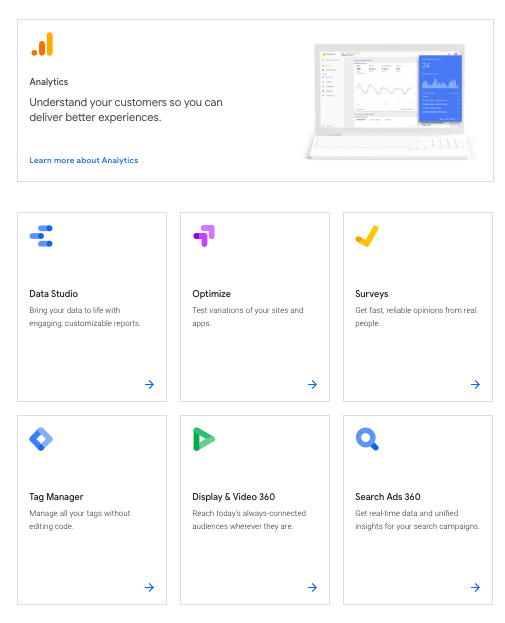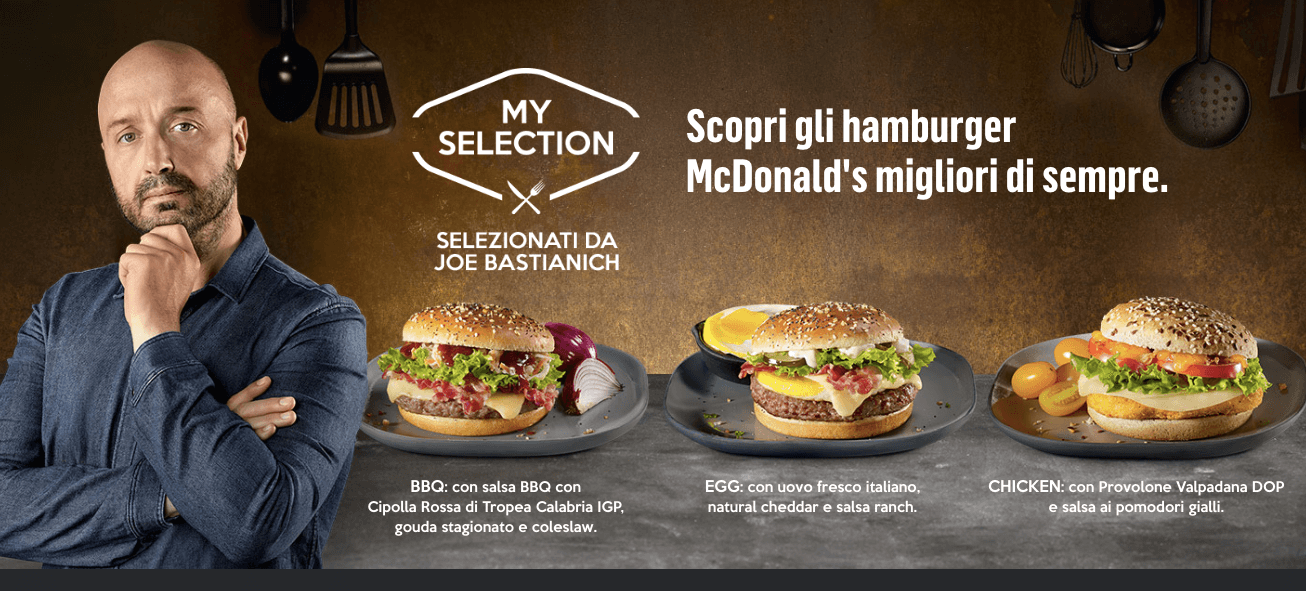| Not logged in : Login |
About: What Is Market Segmentation? the Ultimate Guide to Market Segmentation Goto Sponge NotDistinct Permalink

This is a guide about market segmentation, the technologies that allowed marketers to create more and better-segmented audiences and how the way of communicating changed from mass marketing to one-to-one marketing starting 1920s until today. The guide is divided into three main sections: a brief history of advertising everything you need to know about market segmentation the most powerful online tools for marketers Each of those sections will give you an understanding of three main concepts. First, how marketing evolves with new technologies and how new technologies are used by marketers. Second, you'll learn all the aspects of market segmentation. From how, why and when to create market segments. To the requirement necessary for creating market segments and the types of market segmentation. Third, you'll learn what tools today marketers can leverage on to create audiences and small segments with utmost details. A brief history of advertising Marketing has evolved through the technological devices that allowed marketers to convey the same message to millions of people a the time, like mass media. To technologies that instead allowed marketers to speak to millions of people with customized messages, like social media and SEM. Let's dive a bit into the story of marketing associated with the technological devices that made it possible for marketers to develop new ways of reaching an audience. I argue that as new technologies at the beginning of the 1900s became available for marketers, those allowed to speak to vast audiences. That also meant crafting a message that could be understood by the masses. It was the rise of pop culture. As technology has evolved, it allowed marketers to have accurate data about users. Thus, the marketer could finally craft a personalized message for each user. It is interesting to notice also the change in terminology. From masses to users. From television viewership to the user experience. That is also why marketing is now back to building communities, tribes, and personal relations. This is the story of how we went from mass markets to one-to-one conversations. Radio and Mass market As reported in the book The A to Z of Old Time Radio Frank Conrad, an electric engineer who worked for Westinghouse held more than 200 radio-related patents he started off with his own radio transmitter. Initially, radio broadcasts consisted just of transmitting location and equipment used. Yet Mr. Conrad was soon to be bored by this kind of set up. That is why in 1920 he started a new format called The Radio Amateur News. During the show, Frank Conrad took his phonograph and began to transmit it. At the time 400 people listened to that show. When another executive at Westinghouse noticed the potential for advertising, he understood they should test the same concept with a broader audience and more structured programming. The chance to test that came with the Election Day: When KDKA became the radio's first commercial programmer, it started by asking "Will anyone hearing this broadcast, please communicate with us, as we are anxious to know how far the broadcast is reaching and how it is being received?" In that occasion, more than a thousand listeners were reached. Technology and marketing walk hand in hand. In the 1920s, radio had become the primary medium of communication. Across the U.S. and Europe, broadcasting stations such as KDKA and British Broadcasting Company (BBC) began to rise. The power and potential of mass media were still hard to foresee at the time. Experimentation allowed those first marketers to understand its potential. In fact, disciplines like growth hacking claim to have brought the scientific methodology into the marketing world. In reality, good marketing has always been about experimentation. Also, Frank Conrad was an electrical engineer, and for what we know he might have been the first mass media marketer. Even though he reached just a few hundred people, he changed the rules of the game. We think of Sergey Brin and Larry Page or Mark Zuckerberg as a new expression of a tech world dominated by engineers. Yet as this story shows broadcasts made it possible for companies to send advertising messages to large, undifferentiated audiences at once, giving birth to the mass market concept and the first mass marketing techniques. Then television came, and mass markets became even more prominent. Television and mass market The Brooklyn Dodgers are playing the Philadelphia Phillies. It is July 1, 1941. Suddenly, before the game begins a 10-second advertisement from a watch company - called Bulova - gets broadcasted: This ten-second spot was the first TV commercial US people saw. Imagine the effect of it - if any. From there a multi-billion industry was born. A bunch of commercials became part of the pop culture: TV dominated the advertising together with other media outlets dominated the advertising industry: Source: eprints.lancs.ac.uk Until 2017 came: One of the things for which 2017 might be remembered is the take over of the advertising spending by digital over TV. The internet, Google, and its AdWords Mountain View, California – October 23, 2000, Google makes the following announcement: Google Inc., developer of the award-winning Google search engine, today announced the immediate availability of AdWords(TM), a new program that enables any advertiser to purchase individualized and affordable keyword advertising that appears instantly on the google.com search results page. The AdWords program is an extension of Google’s premium sponsorship program announced in August. The expanded service is available on Google’s homepage or at the AdWords link atadwords.google.com, where users will find all the necessary design and reporting tools to get an online advertising campaign started. The beta debut saw the involvement of 350 businesses and advertising agencies worldwide. However, Google AdWords would be rolled out broadly in 2002: In 2003 Google reported over $790 million in turnover! Google's advertising revenues have grown exponentially to monopolize the digital advertising market together with Facebook. In 2017 Google's revenues from its properties came primarily from AdWords. Revenues reached almost eighty billion in 2017! On Jun 27, 2018, Google announced Google Ads: The new Google Ads brand represents the full range of advertising capabilities we offer today—on Google.com and across our other properties, partner sites and apps—to help marketers connect with the billions of people finding answers on Search, watching videos on YouTube, exploring new places on Google Maps, discovering apps on Google Play, browsing content across the web, and more. The aim is to provide under the same umbrella access to Google Marketing Platform: Social networks, Facebook, and its advertising network Facebook announced Facebook Ads: “Facebook Ads represent a completely new way of advertising online,” Zuckerberg told an audience of more than 250 marketing and advertising executives in New York. “For the last hundred years media has been pushed out to people, but now marketers are going to be a part of the conversation. And they’re going to do this by using the social graph in the same way our users do.” If you want to know where the advertising money is, just follow the eyeballs New technologies influence human behaviors for better or worse. Companies or people operating in the business world use those technological advancements to understand how to alter the responses of people to specific stimuli. Technologies like Radio and TV allowed companies to speak to a broad audience. They also created a monologue between corporations and the public. This also incentivized companies and marketers to use a sort of "universal language" that could be understood by anyone. It was the era of pop culture. This kind of advertising model made sense because companies knew little about who they had on the other side. Thus, they either used mass marketing campaigns that were undifferentiated, or they used invented customer groups based on what they thought were their ideal customer. When tech giants like Google and Facebook entered the advertising industry, it all changed. Advertising was no longer something "magical." Those companies founded and run by engineers looked at advertising and tried to make it accountable, and measurable. So that any business paying for advertising could stop focusing on metrics used in TV advertising like gross rating points (audience reached by the frequency of its exposure to the message during a given period); and focus more and more on conversion targets with PPC (pay-per-click) also known in the business as CPC (cost-per-click). The reason why in the history of modern advertising I included mainly Google and Facebook is that those two companies combined took over the advertising industry. In fact, as Statista points out: Over the past two decades, advertisers have gradually shifted their budgets away from traditional media (e.g. TV, newspapers and magazines) towards online ads. The rise of the smartphone has only accelerated this shift, as smartphones have fundamentally changed the way that people consume content. Ad dollars have always followed eyeballs and thus it doesn’t come as a surprise that mobile ad spending is currently growing at a breathtaking rate. As reported by Statista 25% of global ad spend goes to Google or Facebook. Part of this process has been driven by the change in behaviors of users driven by new technologies. In fact, as mobile devices are becoming less and less expensive, most of the consumption of content and information is connected to those devices. That is why ad spending has followed. This short history of advertising could have well been called "history of eyeballs." In this landscape, we'll see also how advertising has changed and how it has evolved from mass marketing, with the so-called shotgun approaches, to hyper-personalized approaches. In other words, market segmentation moved from undifferentiated to highly personalized. Those changes were driven by a word that today represents the most important asset any company is willing to fight for: data! Everything you need to know about market segmentation As Peter Drucker pointed out in his book Drucker Management, "there will be always, one can assume, be need for some selling. But the aim of marketing is to make selling superfluous. The aim of marketing is to know and understand the customer so well that the product or service fits him and sells itself." In this guide, we'll see how market segmentation is aiming at just that, allow marketers to know customers need and pain points so well as a sales enablement device and tactic. What is market segmentation? Market segmentation is a marketing practice that allows companies to divide their customers into groups, thus classify them based on specific characteristics. Market segmentation isn't new. In fact, it has been used since the 1920s when mass manufacturers needed to offer a more comprehensive product line that could fit broader groups of people. Market segmentation at the time (up to the 1980s) was mainly based on demographic, socio-economic and lifestyle factors. In fact, those were the main characteristics that could be figured out about a group of people that companies were targeting. As more and new data became available market segmentations took into account also so-called psychographic segments, organized according to activities, interest, and opinion. From the 1980s going forward, there was a shift in market segmentation that allowed companies to narrow the segments they were targeting to include more sophisticated features of those groups. The ear os the so-called hyper-segmentation begun and in a way, we are still living it today. With new kinds of market segments that allow one-to-one and personalized experiences, thanks to the ease of data acquisition through digital devices. Graph from Google Ngram Viewer shows the mention of the term "market segmentation" in millions of books throughout the 1900s to 2000s What are the bases of market segmentation? It is important to point out that proper market segmentation is about starting with the customer in mind. In short, the reason for segmenting a market is based on differentiating the otherwise undifferentiated offer to fit the customer needs based on their preferences. Thus, market segmentation is justified when it provides customers with better products or services. Market segmentation is also critical to understand the distribution channels needed to grow your business. In fact, with tools like the business model canvas or the lean startup canvas, one of the main aspects is understanding customers based on their needs and pain points are and what kind unique value proposition you can bring with your product and service. Therefore, there isn't a fixed number of segments that can be created. In fact, there can be many examples of market segments based on the following characteristics: Those include market segments based on gender, age group, income, place, occupation, usage, lifestyle and more. For the sake of keeping things simple, we'll discuss the four main types of market segments. At the same time, we'll also look at why, when and how to create a market segment. Why, when and how to create a market segment For an ideal market segment, there are different criteria to take into account. In fact, the more you can divide up the market into small groups of people the more the marketing effort it will be easy to plan and execute. It doesn't always make sense to create segments unless you have available data about those segments. In fact, as more data becomes available (think of the billions of queries that each day goes through Google or the social knowledge graph Facebook has at its disposal) so new segments become possible. Therefore, segments must be measurable. At the same time market segmentation makes sense when it can generate enough profit from your marketing effort. Imagine the case in which market segments might be comprised of a small group of people with a low spending availability. Your marketing effort would be wasted. Also, you need to make sure to target a group of people with characteristics that will last in time. For instance, imagine the case in which you set up a market segment, and a marketing campaign based on that. When the campaign is about to get rolled out. If that segment doesn't exist anymore. It becomes a wasted marketing effort. At the same time, that market segment needs to be reachable through several channels. Think of customers that can be reached through your website, social media accounts, events and so forth. Also, would you be able to persuade that market segment? If that is too hard or not possible, the market segment itself loses relevance. The last element which is critical is about having enough data to support the creation of that market segment. Those are the requirements for market segmentation. Let's see them more in detail. Requirements for market segmentation Measurable and identifiable Can we measure those segments so that they can be identified? Accessible Can we reach those segments through communication and distribution? Different Do those segments respond differently to different marketing mixes? In short, do they have unique needs? Substantial Is this segment large enough to be profitable, thus justify the marketing effort required? Durable Are those identified segments stable enough to allow proper marketing campaigns? The aim is to provide a better product, service or experience to customers. Which will, in turn, lead to an improved marketing effort rewarded by more sales. Types of market segmentation We can identify five main categories and types of market segments: Demographic: sex, age, race, generation, occupation, etc. Geographic: geographic regions such as county, state, city, neighborhood. Behavioral: knowledge of, attitude towards, usage rate, response. Psychographic: activities, interests, and opinions (AIOs) of customers. What is demographic segmentation? Demographic segmentation is about classifying people based on characteristics such as age, gender, relationship status, education, workplace, and more. This is among the most common market segmentation techniques. In fact, it was also the first market segmentation used which comprise factors like age, life cycle stage, gender, income, religion, race, nationality and more. A demographic segmentation might be useful to companies also to create several product lines. What is geographic segmentation? This market segmentation is based on reaching people in areas that are closer to the final customer. For instance, take McDonald's, the chain has restaurants all over the world, yet the strategy will be localized, as much as possible: In this picture, you can see how McDonald's uses a famous Italian-American chef as a testimonial for a selected menu. In a country like Italy where high-end food is critical, McDonald's associated its brand image with quality food. What is behavioral segmentation? This market segmentation strategy is base on customers based on benefits sought, occasion, usage rate, brand loyalty, user status, buyer readiness status. In short, it looks at purchasing behaviors, device usage, and other activities. What is psychographic segmentation? Psychographics started as an attempt to go beyond demographics. As computational power grew more data became available, this gave a chance for marketers to better segment potential customers. As recounted on archive.ama.org when Emanuel H. Demby, one of the founding fathers of psychographics when he was asked "What do you call what you're attempting to do?" he said "Psychographics!" which was meant as a combination of psychology and demographics. Source: archive.ama.org Another founding father of psychographics was Paul Lazerfeld and his associates during the 1950s at Columbia University's Bureau of Applied Statistics. As pointed out by Emanuel H. Demby, Paul Lazerfeld taught that any market research that wanted to understand consumer behavior had to "involve an interplay among three sets of variables; predisposition, influences, and product attributes." Therefore, psychographics is an attempt to move away from just demographics and give meaning to numbers by focusing more on individuals with feelings and tendencies. Give meaning to numbers is the primary aim of a marketer. Imagine those two scenarios, Mr. X earns $40K per year. With the other situation, Mr. X earns $40K, after getting a 10% rise compared to the previous three years salary. Without going too far we can put ourselves in the shoes of Mr. X, how accomplished he feels and the purchasing tendencies he might have after such a raise. Maybe he wants to buy a new car or a new TV set. Keep in mind that marketers focus is to increase sales. And there is no better salesperson that whom has insights and personalized information about her target customer. While in the past it was tough to get valuable psychographics data, that isn't the case anymore. For instance, at the time of this writing, tools like Google Ads and Facebook Ads allow marketers to go quite in-depth with psychographics definition of their audience: Source: searchengineland.com Above an example of how Google Ads enable marketers to target specific interests and psychographics traits of a group of people. This allows a segmentation that can be laser targeted. The four level of market segmentation As Philip Kotler suggests in "from mass marketing to mass customization" to reiterate, the four steps of market segmentation which are: probing, partitioning, prioritizing and positioning. This is an ongoing feedback loop. He also divides the market segmentation into four levels: mass market segmented markets micro-markets (distinct from segmented markets) and individual markets Mass marketing and the shotgun approach As Philip Kotler recounted in "from mass marketing to mass customization" it all started in Japan where he noticed market researchers going to one household as a sample for a product launch. Philip Kotler noted, "how can you generalize from the sample of one?" and as the story goes, the Japanese market researches replied "We Japanese are homogeneous. We're all alike. If this family likes the product, everyone will like the product." This kind of "market segmentation" can be referred to as a shotgun approach. In short, just like a shotgun is used to aim at moving targets in the air, so the shotgun approach tries to reach a wider audience, with no specific focus. In short, mass marketing runs along mass production, mass distribution, and mass promotion. In this scenario, Mass media has played a crucial role. This kind of approach favors such large audiences that can be reached with mass marketing media, like radio and television. While this kind of approach might have had sense in the 1980s, it has become obsolete now. Large corporations, like Coca-Cola, still spend a significant amount of money as a branding effort to feature TV spot shown to millions of people. For large corporations that want to keep a strong brand and be on "top-of-mind" for their consumers, this strategy is still robust. For small businesses or startups using a similar approach might lead to bankruptcy. That is also why startup has made of the scientific method and measurable results more and more their credo, with disciplines like growth marketing and growth hacking. Segmented markets When a market gets segmented based on several characteristics (like demographics: sex, geographic, behavioral and psychographic), this is where marketing and communication campaigns can be customized to the need of the still large group of people, yet in a way, those are differentiated. Thus, we move from an undifferentiated approach of mass marketing to a differentiated approach to segmentation. Niche marketing and micromarketing To give you a visual representation of niche marketing, think of it as being a big fish in a small pond. Niche marketing is about becoming an authority for a small community of people of which you know their main characteristics. As Peter Thiel, co-founder of PayPal, pointed out successful companies target at monopolizing markets instead of going where competition is. In his book Zero to One, there are four steps to take to dominate a market: Start small to monopolize Scale-up Stop with the BS of disruption Be like a chess player, think about the endgame https://fourweekmba.com/first-mover-advantage/ While niches are mainly based on interests, when we move toward micromarketing this might become more localized. Therefore, where niche marketing focuses more on behaviors, benefits, feature, lifestyle and so on. Micromarketing focuses on small localized groups. The niche and micro-marketing approach are more suited for a small business or startup as it allows them to have a way higher and measurable ROI on their marketing effort. Also, in small segments, it might be easier to create a feedback loop that allows small business to learn and grow faster! One-to-one marketing One-to-one marketing is the approach that starts with creating personalized interactions with the potential customer and personal relationships with customers. In an article dated 1999, HBR asked "Is Your Company Ready for One-to-One Marketing?" defined as "being willing and able to change your behavior toward an individual customer based on what the customer tells you and what else you know about that customer." The main aim of one-to-one marketing is to establish a "learning relationship" with your potential customers and customers. In short, for any interaction, there will be a learning experience, a better understanding of that customer needs. Most companies opted for the mass marketing approach. It consisted of reaching the highest number possible of people with a message that needed to be simplified. The one-to-one marketing starts from the opposite assumption, and it is based on two types of one-to-one marketing: Personalized: Think of Amazon personalized experience: Customized: Think of Converse where they give you a basic shoe, and you can customize it with your own creativity: In the era of large tech companies like Netflix, Amazon, and Spotify which have built their success on subscription business models (Amazon Prime is still a small part of Amazon revenue, but it is very promising) the one-to-one marketing has become the norm. In fact, the reason why many people stick with those services is due to the degree of personalization. Netflix algorithm knows your TV series preferences better than your best friends, while Spotify knows the kind of music you like better than yourself. This is possible thanks to algorithms that based on behavioral patterns create predictive models based on customers data. As data becomes critical for one-to-one marketing, the essential asset for those companies become the so-called User ID, which contains the whole history and interactions of customers with those personalized platforms. The most powerful online tools for the marketer In this section, I want to show you some practical tools today marketers have at their disposal to segments customers, users and grow a business with the power of data. Google Analytics: from behavioral to psychographics advertising As defined on neilpatel.com: Behavioral advertising is a technique used by online advertisers to present targeted ads to consumers by collecting information about their browsing behavior. What kind of data does behavioral advertising aim at? Once again Neil Patel helps to define the sort of data it targets: The pages browsed on a website The time spent on the site The clicks made The recency of the visit The overall interaction with the site With Google Analytics you can quickly get any data that goes from demographics to psychographics: As a user navigates between web pages, Google Analytics uses cookies to store and remember valuable pieces of information. In short, Google creates a so-called Client ID used to identify users and their activities on the site (anonymously). Retargeting and the art of repeating the message Retargeting starts from the assumption that message repetition brings to conversion. In fact, traditional sales funnel (an imagined path a person goes through before becoming a customer) looks something like this: This path seems linear. However, in the real world the path a user takes before it becomes a customer is very unpredictable. Retargeting might help in making the path of a user more predictable by repeating the message. For instance, have you noticed that after you visit an e-commerce store, when you land on an unrelated website through Google, you find that same store as a banner ad? That is retargeting in action. Google's in-market audiences With Google in-market audiences you can target a wide number of variables: Apparel and Accessories Autos & Vehicles Baby & Children's Products Beauty Products & Services* Business Services* Computers & Peripherals Consumer Electronics Consumer Software Dating Services* Education Employment Financial Services Gifts & Occasions Home & Garden Real Estate Sports & Fitness* Telecom Travel Google knows a lot about you based on the data it collects. For instance, if you go to adssettings.google.com/u/0/authenticated you can see how Google has profiled you just like it profiled me: What about Facebook? Facebook audience insights For years users have been giving to Facebook a growing amount of critical data about themselves. Facebook has built a business on that data. In fact, marketers can select their audience with a laser target: Source: facebook.com What does Facebook know about you? You can check how Facebook profiled and segmented you here: facebook.com/ads/preferences, to see the information that best describes you (according to the Facebook algorithm), click your Information > your Categories: As specified in the ad preferences "the categories in this section help advertisers reach people who are most likely to be interested in their products, services, and causes. We've added you to these categories based on information you've provided on Facebook and other activity." Even though I seldom use Facebook the algorithm knows quite a few things about me and those are passed on to marketers that use Facebook Ads. In fact, those marketers get access to Facebook audience insights: Source: facebook.com With this suite, marketers can gain insights into demographics, page likes (thus interests), location and language, Facebook usage, purchase activity and more. With this kind of tool, you can build smaller and smaller segments but also more qualified. Source: blog.hubspot.com It is important to notice that targeting a narrow audience will make the marketing campaign way more expensive yet that same campaign will get better results regarding ROI! https://fourweekmba.com/what-is-a-business-model/ Key takeaway In this guide, you got an in-depth understanding of the advertising world through market segmentation, its evolution, and its tools. It is easy to lose the sight of what marketing is for. Too many times it becomes an end in itself. Instead, I'd like to repeat Peter Drucker statement "there will be always, one can assume, be need for some selling. But the aim of marketing is to make selling superfluous. The aim of marketing is to know and understand the customer so well that the product or service fits him and sells itself." Will the day come when marketing will have reached its final mission, make selling superfluous? Resources to get started with your business: What Is a Business Model? 30 Successful Types of Business Models You Need to Know What Is a Business Model Canvas? Business Model Canvas Explained Handpicked popular case studies from the site: The Power of Google Business Model in a Nutshell How Does Google Make Money? It’s Not Just Advertising! How Does DuckDuckGo Make Money? DuckDuckGo Business Model Explained How Amazon Makes Money: Amazon Business Model in a Nutshell How Does Netflix Make Money? Netflix Business Model Explained How Does Spotify Make Money? Spotify Business Model In A Nutshell The Trillion Dollar Company: Apple Business Model In A Nutshell
| Attributes | Values |
|---|---|
| type | |
| label |
|
| label |
|
| sameAs | |
| Relation |
|
| author | |
| Description |
|
| depiction | |
| name |
|
| url |
|
| http://www.w3.org/2007/ont/link#uri | |
| is References of | |
| is Relation of |
Alternative Linked Data Documents: PivotViewer | iSPARQL | ODE Content Formats:
![[cxml]](/fct/images/cxml_doc.png)
![[csv]](/fct/images/csv_doc.png) RDF
RDF
![[text]](/fct/images/ntriples_doc.png)
![[turtle]](/fct/images/n3turtle_doc.png)
![[ld+json]](/fct/images/jsonld_doc.png)
![[rdf+json]](/fct/images/json_doc.png)
![[rdf+xml]](/fct/images/xml_doc.png) ODATA
ODATA
![[atom+xml]](/fct/images/atom_doc.png)
![[odata+json]](/fct/images/json_doc.png) Microdata
Microdata
![[microdata+json]](/fct/images/json_doc.png)
![[html]](/fct/images/html_doc.png) About
About


![[RDF Data]](/fct/images/sw-rdf-blue.png)
OpenLink Virtuoso version 08.03.3330 as of Mar 11 2024, on Linux (x86_64-generic-linux-glibc25), Single-Server Edition (7 GB total memory, 6 GB memory in use)
Data on this page belongs to its respective rights holders.
Virtuoso Faceted Browser Copyright © 2009-2024 OpenLink Software























